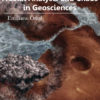Remote sensing is neither a difficult or exotic technology. At its most fundamental level, remote sensing is a form of basic field data collection, an activity common to all physical, natural, and social science and motivated by the same overarching goals: to systematically observe phenomena in order to record useful measurements of the variables that define their characteristic properties. Remote sensing simply acquires those measurements in a very different manner. Anyone with a background in subject areas ranging from geography, Earth science, planning, or resource management, to perhaps less obvious fields such as public policy studies, environmental health, and international development can apply remote sensing methods successfully and produce useful information that can address a myriad of problems and issues. To approach this wider audience, I have elected to title this book using the term “environmental sensing,” where the verb sensing means “to become aware of”; aware of the technology and of the environmental patterns this technology can illuminate.













